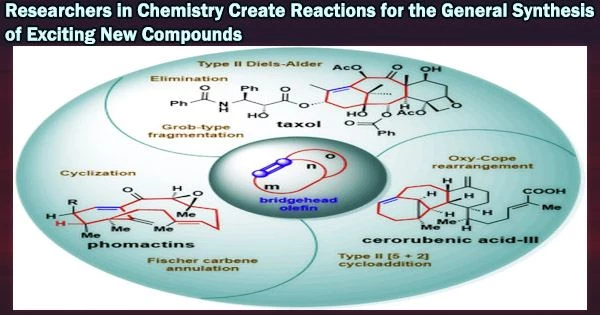The 1,2,3,5-tetrazine family of chemicals, which has considerable potential for the production of medicines, biological probes, and other chemical products, has been the subject of the first generic technique of synthesis developed by chemists at Scripps Research.
The first chemical in this as-yet-unknown family was created by researchers in 2019, but the new procedure, which was disclosed on December 3 in the Journal of Organic Chemistry, is now more widespread and effective.
“For the first time, the chemistry community can access these promising compounds and explore their interesting properties,” says study senior author Dale Boger, Ph.D., the Richard and Alice Cramer Professor of Chemistry at Scripps Research.
The study’s first author was Zhi-Chen Wu, PhD, a graduate student in the Boger lab during the study, now a medicinal chemist at Amgen.
Methods that enable the synthesis of novel chemicals always hold the promise of creating novel pharmaceuticals and other goods with interesting, useful properties. Given the effectiveness of the closely related 1,2,4,5-tetrazines, the 1,2,3,5-tetrazines have been viewed as being particularly promising.
The later substances, which were found in 1959, have distinctive reactivity patterns and are frequently employed to create new materials, medicines, and chemical probes that mark biological entities.
The 1,24,5-tetrazines are most famous for their applications in “click chemistry” reactions, so named for their simplicity of usage and effective, targeted reactivity with target molecules. (Click chemistry’s widespread utility was recognized with this year’s Nobel Prize in Chemistry.)
“The 1,2,4,5-tetrazines have become unbelievably valuable for chemistry in the 60+ years since their discovery,” Boger says.
Despite having the same chemical formula but a different atom arrangement than 1,2,4,5-tetrazines, 1,2,3,5-tetrazines have proven to be significantly harder to find. But Wu and Boger discovered plenty of evidence of its promise when they completed the first 1,2,3,5-tetrazine synthesis in 2019.
One observation was that the compound can very efficiently and swiftly react with compounds called amidines via “ligation reactions” (a type of reaction that joins two fragments together).
These ligations, according to the scientists, could serve as the foundation for new molecular probes and labeling methods for biology as well as the construction of medications and other chemical goods.
Additionally, the researchers discovered proof that the 1,2,3,5-tetrazine’s reactivity varied from that of the 1,2,4,5-tetrazines in a way that would permit the simultaneous employment of the two tetrazine classes in specific situations without causing crossover reactivity.
The original 1,2,3,5-tetrazine synthesis was relatively time-consuming and only produced one product. The new approach, in contrast, provides a broad route to rapidly synthesize several variants of these molecules from cheap, commercially available starting chemicals in just five reaction steps.
The scientists will now create more fresh 1,2,3,5-tetrazines with their coworkers at Scripps Research in order to investigate their capabilities in click chemistry and other applications.
“I think this is the start of a new chapter that could prove to be as timely, durable, and important as the one for 1,2,4,5-tetrazines,” Boger says.





